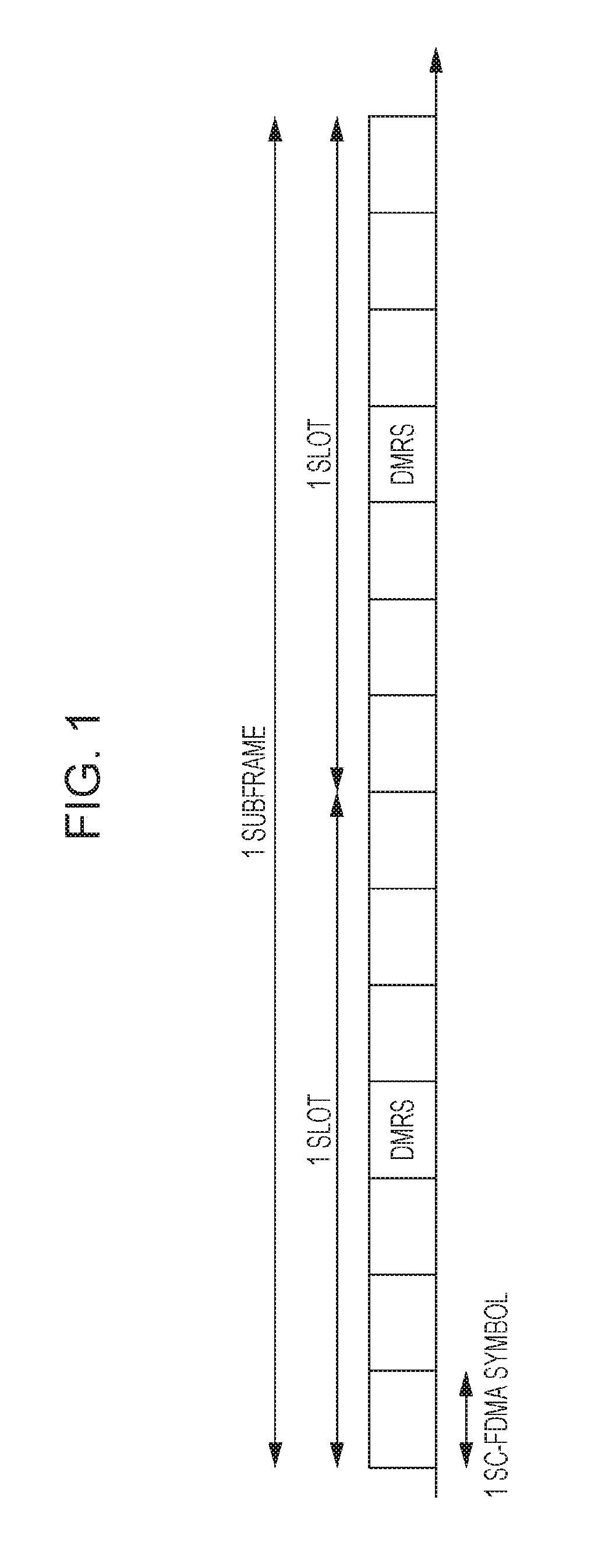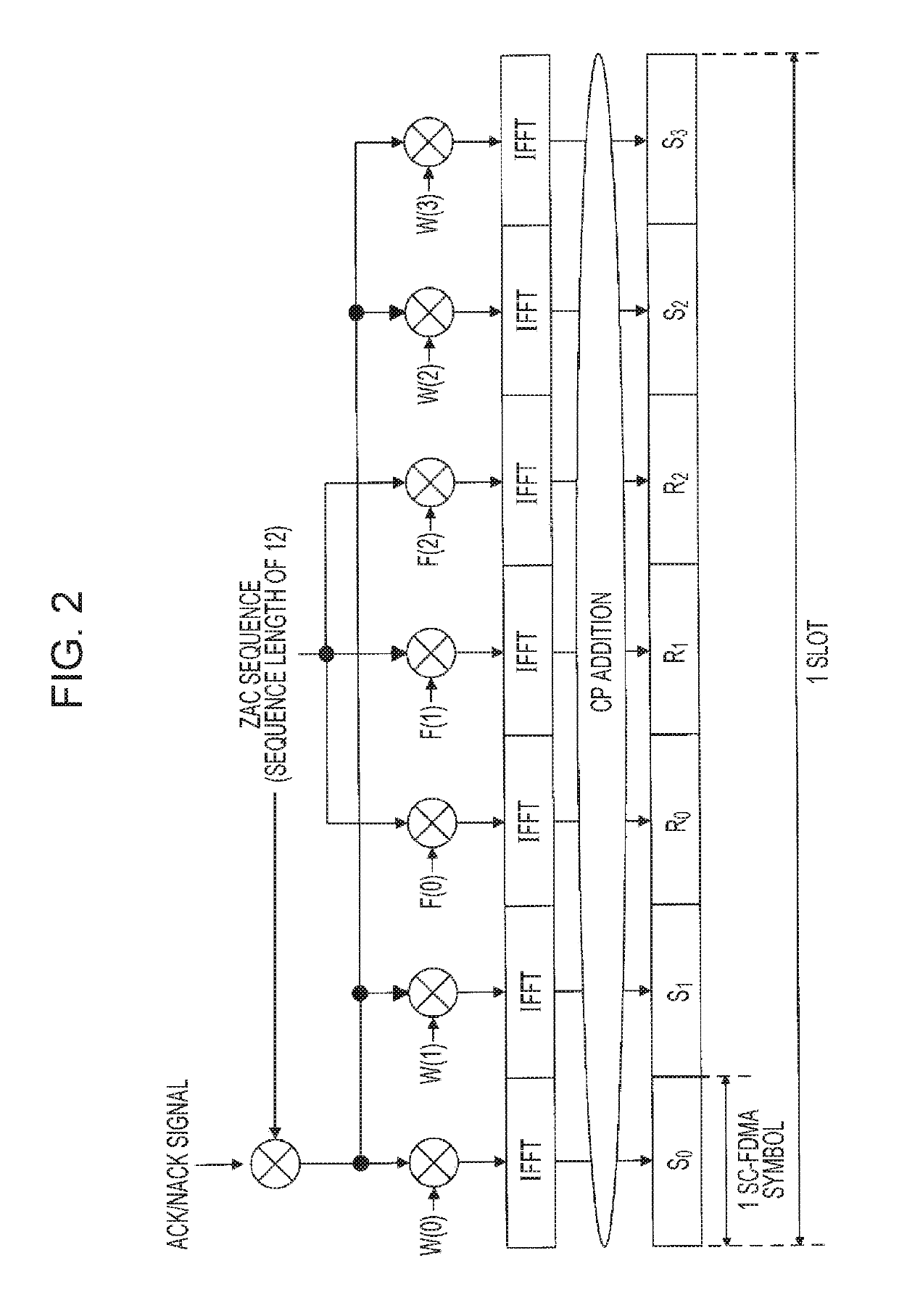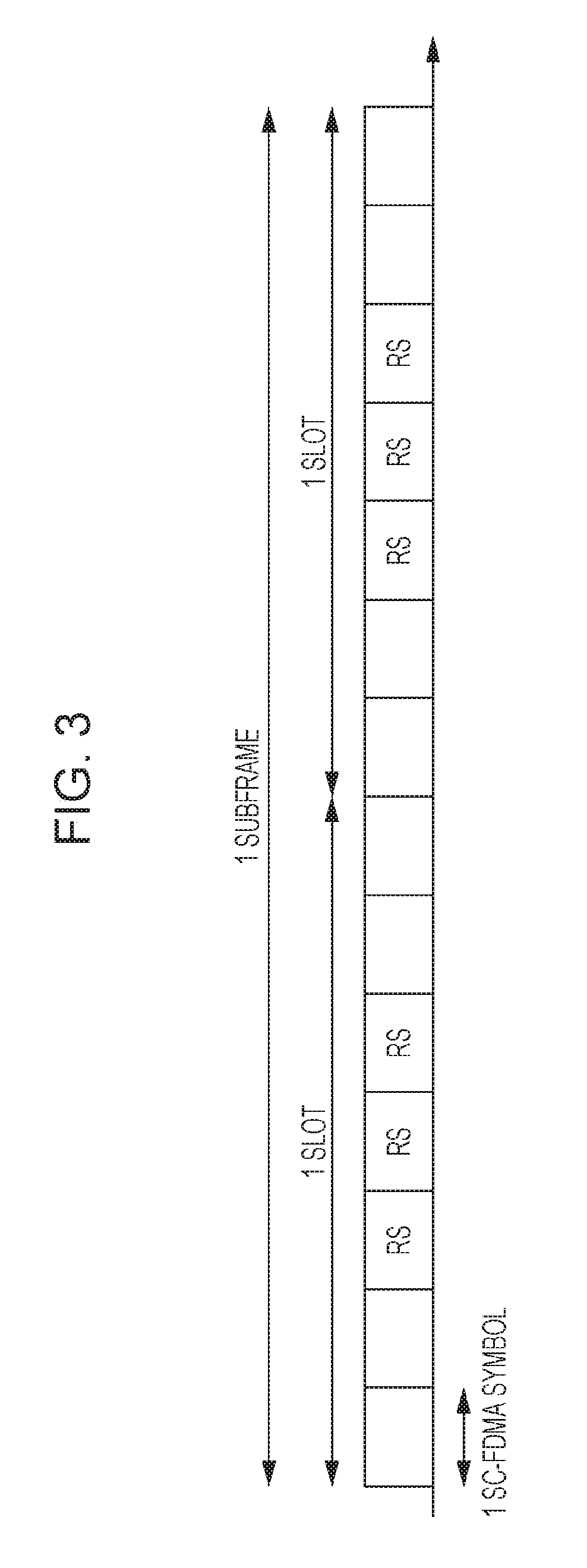Terminal and transmission method for transmitting repetition signals using a transmission format that accommodates SRS transmission
a transmission format and repeater technology, applied in the field of terminals and transmission methods, can solve problems such as undesirable complexity of the demodulation process in the base station, collapse of the orthogonality between the occ sequence, and the inability to adapt to the transmission format of the repeater signal, so as to prevent the collision between the data signal of the mtc coverage enhancement terminal and the srs. the effect of reducing the effect of an existing lte system
- Summary
- Abstract
- Description
- Claims
- Application Information
AI Technical Summary
Benefits of technology
Problems solved by technology
Method used
Image
Examples
first embodiment
Configuration of Base Station
[0055]FIG. 9 is a block diagram illustrating the configuration of the base station 100 according to a first embodiment of the present disclosure. In FIG. 9, the base station 100 includes the control unit 101, a control signal generation unit 102, a control signal encoding unit 103, a control signal modulation unit 104, a data encoding unit 105, a retransmission control unit 106, a data modulation unit 107, a signal assignment unit 108, an IFFT (Inverse Fast Fourier Transform) unit 109, a CP addition unit 110, a transmission unit 111, an antenna 112, the reception unit 113, a CP removal unit 114, a PUCCH extraction unit 115, a combining unit 116, a demapping unit 117, a channel estimation unit 118, an equalization unit 119, a de-spreading unit 120, a correlation processing unit 121, and a determination unit 122.
[0056]The control unit 101 determines an SRS resource candidate group in a cell covered by the base station 100 in consideration of the number of ...
second embodiment
[0122]In an existing LTE system, a PUCCH is located at both edges of a system band along a frequency domain, and frequency hopping (inter-slot frequency hopping) is performed between the first and second slots.
[0123]In MTC, whose specifications are being examined in LTE-Advanced Release 13, on the other hand, an MTC terminal supports only a frequency bandwidth of 1.4 MHz (narrow band) in order to reduce the cost of the terminal (MTC terminal).
[0124]In MTC, therefore, it is considered that contribution to communication characteristics is larger in producing an effect of improving the estimation accuracy of channel estimation using reference signals in two slots of each subframe than in producing a frequency diversity effect through inter-slot frequency hopping within the 1.4 MHz band.
[0125]In the present embodiment, therefore, a case will be described in which, in PUCCH repetition, a PUCCH is transmitted using the same resources (that is, the same format) between the first and second...
third embodiment
[0143]In the first and second embodiments, if there is even one SRS transmission candidate subframe in the X-subframe period, a response signal is not transmitted using last SC-FDMA symbols (e.g., refer to FIG. 11) or seventh SC-FDMA symbols and the last SC-FDMA symbols (that is, a last SC-FDMA symbol of each slot; e.g., refer to FIG. 12) of all the X subframes, and overhead becomes large.
[0144]In the present embodiment, therefore, a method for minimizing symbols with which a response signal is not transmitted and reducing the overhead will be described.
[0145]A base station and a terminal according to the present embodiment have the same basic configurations as the base station 100 and the terminal 200 according to the first embodiment and will be described with reference to FIGS. 9 and 10.
[0146]The base station 100 transmits srs-SubframeConfig to the terminal 200 through cell-specific higher layer signaling for setting an SRS resource candidate group.
[0147]In addition, before a PUC...
PUM
 Login to View More
Login to View More Abstract
Description
Claims
Application Information
 Login to View More
Login to View More - R&D
- Intellectual Property
- Life Sciences
- Materials
- Tech Scout
- Unparalleled Data Quality
- Higher Quality Content
- 60% Fewer Hallucinations
Browse by: Latest US Patents, China's latest patents, Technical Efficacy Thesaurus, Application Domain, Technology Topic, Popular Technical Reports.
© 2025 PatSnap. All rights reserved.Legal|Privacy policy|Modern Slavery Act Transparency Statement|Sitemap|About US| Contact US: help@patsnap.com



